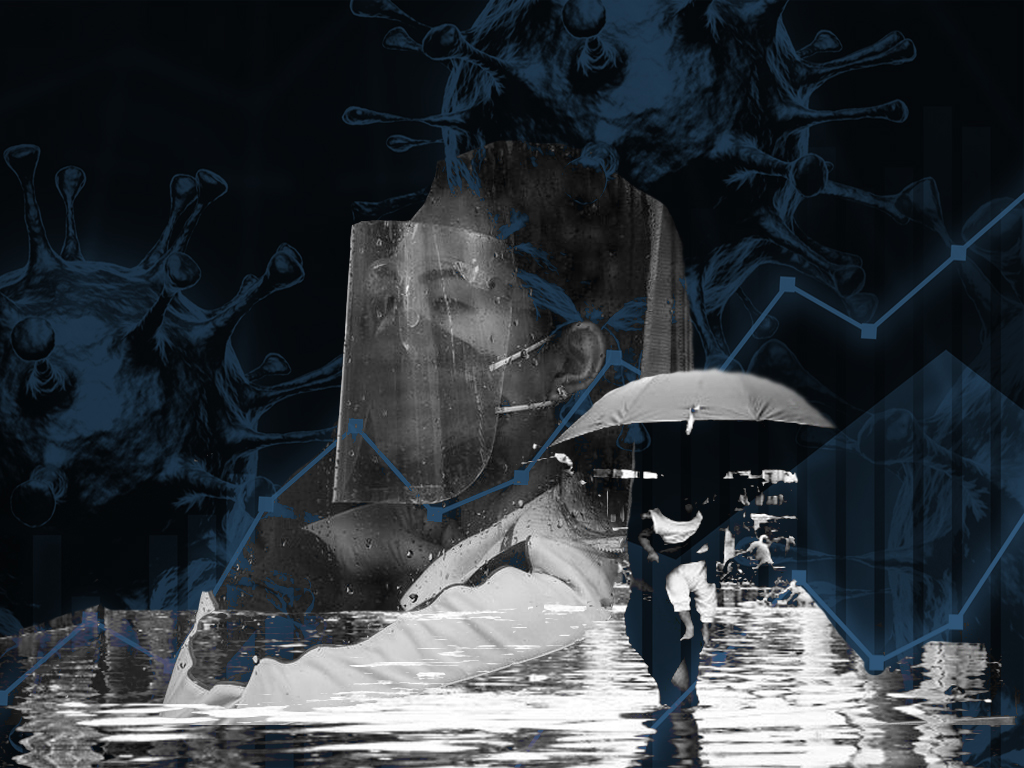This Week in Media (July 19 to 23, 2021)
Media keep watch on Delta variant amid pre-campaigns, Duterte’s last SONA
FEW WOULD claim that pre-campaign politics or Rodrigo Duterte’s coming State of the Nation Address could compete in terms of relevance with the news of local cases of an even deadlier strain of COVID-19. But all three nevertheless got their share of the biggest news headlines and primetime TV news.
Media attention has always been fixed on the president’s ritual appearance in Congress, but some news organizations got ahead of the president by recalling significant developments in the last five years of his watch.
Coverage of the Delta variant’s threat, however, was focused mostly on the documentation of cases, and the political front was left to pundits to discuss.
Delta variant as a major concern
The threat of the more infectious Delta variant of COVID-19 dominated much of media coverage after the DOH announced on July 16 that apart from cases confirmed among returning Filipinos, 11 local cases of the strain have been identified. The department then refused to confirm local transmission as the links between these cases had yet to be established, according to Dr. Alethea de Guzman of DOH’s Epidemiology Bureau. It took almost a week for the DOH to confirm this in a press release issued late Thursday night, July 22.
News accounts did their part to track the location of cases and reported preliminary measures that the IATF had undertaken to reduce the spread of the infections. These included the expanded travel ban to include Malaysia and Thailand which have recorded Delta cases; the suspension of the IATF resolution allowing children above five years old to go out; and the reimposition of “GCQ with heightened restrictions” in NCR and four other provinces.
As of press time however, the government had not restricted interzonal travel. CNN Philippines reported exclusively on July 23 that President Duterte is mulling the closure of the country’s borders. But the “emergency meeting” was scheduled for the weekend, on Saturday, July 24.
Without clear directives from the national leadership, local governments once again bore the brunt of deciding whether to impose restrictions and augment their healthcare facilities for a possible surge. Last week, vaccine czar Carlito Galvez, Jr. said the Philippines is “well-prepared” against the Delta variant, since the India outbreaks taught the country to “prepare everything in (sic) large scale.”
But news accounts have not emphasized that the limited genomic surveillance capacity causes a delay in identifying the variants and the extent of their infection, as some of the Delta cases confirmed this month go back to infections reported as far as May.
News coverage has not focused on the need to amplify existing measures such as testing, contact tracing, isolation and vaccination as necessary to check the spread of the Delta variant, which has been described as more deadly and more transmissible.
Some media have been more alert to government lapses. Some online reports also pointed out that the DOH could not explain why tagged Delta recoveries showed positive results upon retesting. But journalists in general did not call out government’s tendency to be reactive rather than proactive in dealing with pandemic surges. In 2020, it delayed the decision to ban flights from Wuhan. When neighboring countries reported the rising cases of Delta, government officials seemed unable to make quick decisions to address the danger on all possible fronts.
Pre-campaign trail
Senators Panfilo Lacson, Jr. and Vicente Sotto III joined the club of early campaigners when they announced their tandem candidacy for 2022. Despite their shared history of support for Duterte’s controversial policies, both denied they were pro-administration candidates. They also denied being in opposition to Duterte, claiming they were only providing an “alternative.”
Meanwhile, Ben Evardone, a ranking PDP-Laban official, released the party’s proposed senatorial slate, composed not surprisingly of mostly incumbent Cabinet members. Media reports did not note that the senatorial line up of Sotto-Lacson and Duterte share a number of candidates, which should have provoked journalists to ask: How much of an alternative do these candidates provide?
As Duterte jumped into the fray within PDP-Laban which carried his presidential candidacy in 2016, some reports did point to the storied past of the party, particularly its role against the Marcos dictatorship. CMFR’s context piece noted that PDP-Laban is no longer in touch with its legacy and the irony underlying Duterte’s connection to its founders.
Better elections coverage?
Last July 17, journalists, news organizations and other stakeholders organized a forum to launch a pledge to preserve the integrity of the 2022 elections through fact-based and issue-based reporting. CMFR signed on this pledge.
Independent and alternative online news sites did carry the pledge and the Inquirer’s print edition produced a story on the development. But some of the media people who were present in the forum and who signed the pledge were curiously quiet about it.
The last days of the week saw heavy rains and news of flooding in many areas. It’s not exactly a great situation in which to await what happens next.


Leave a Reply